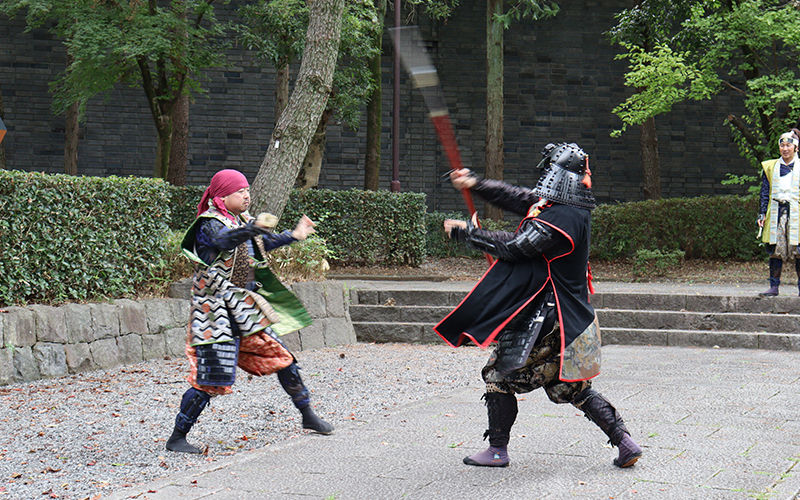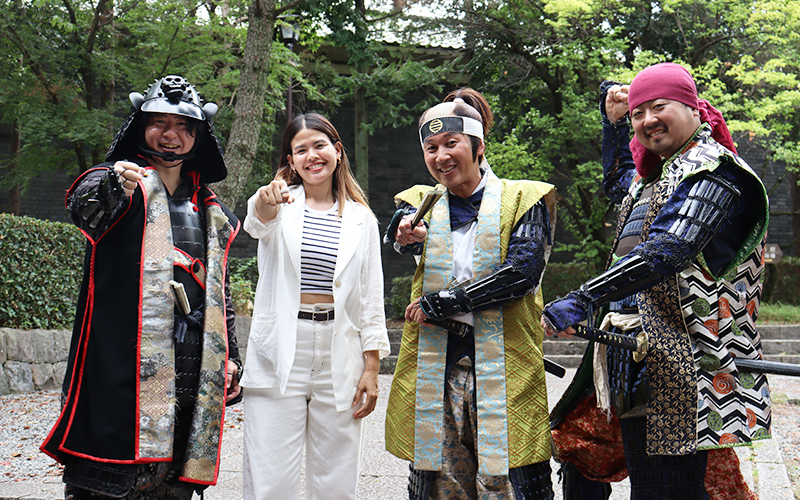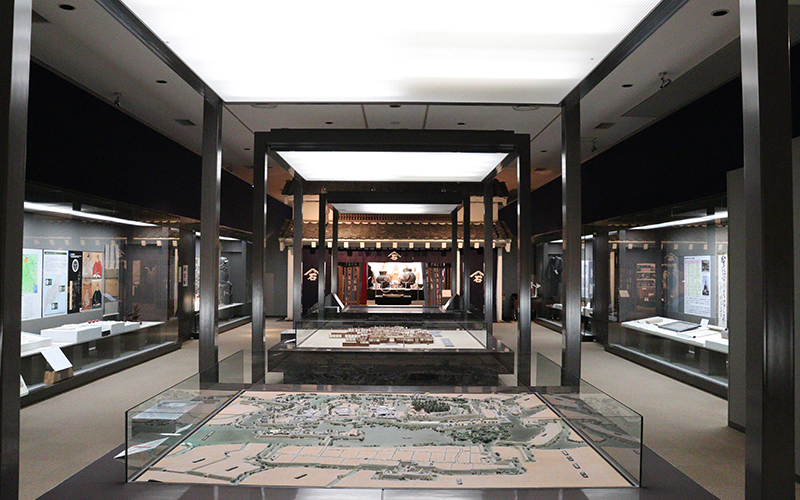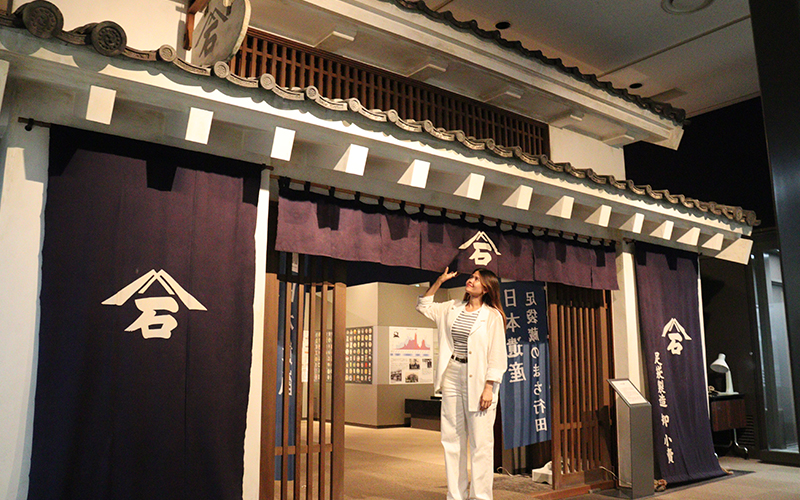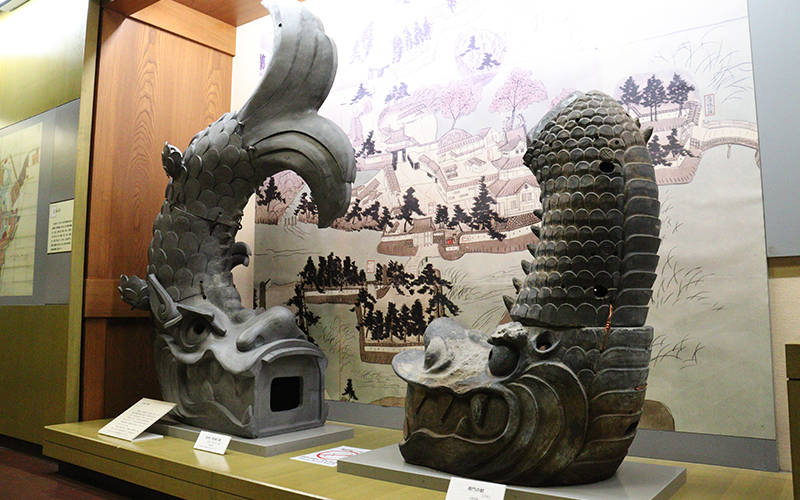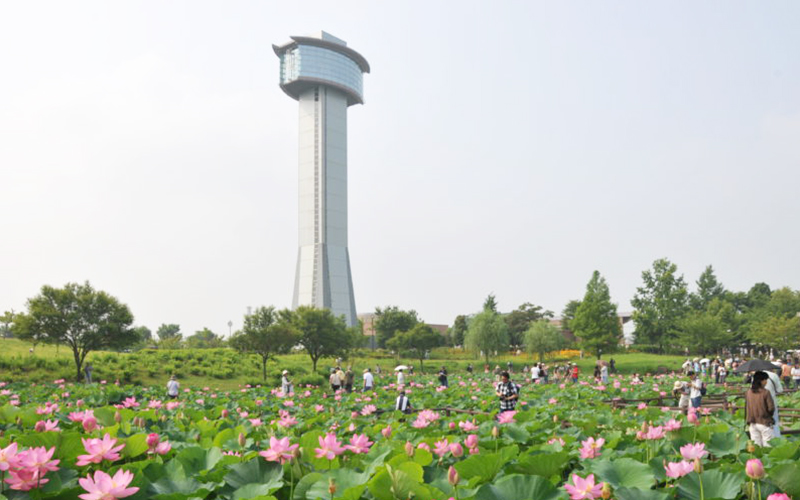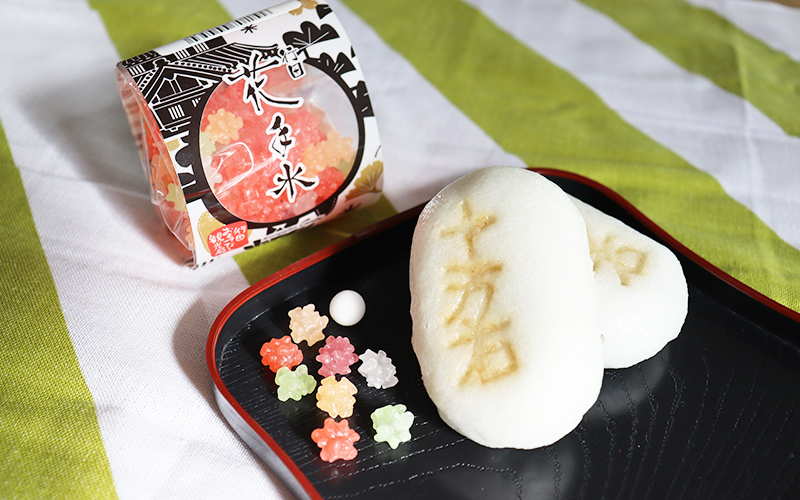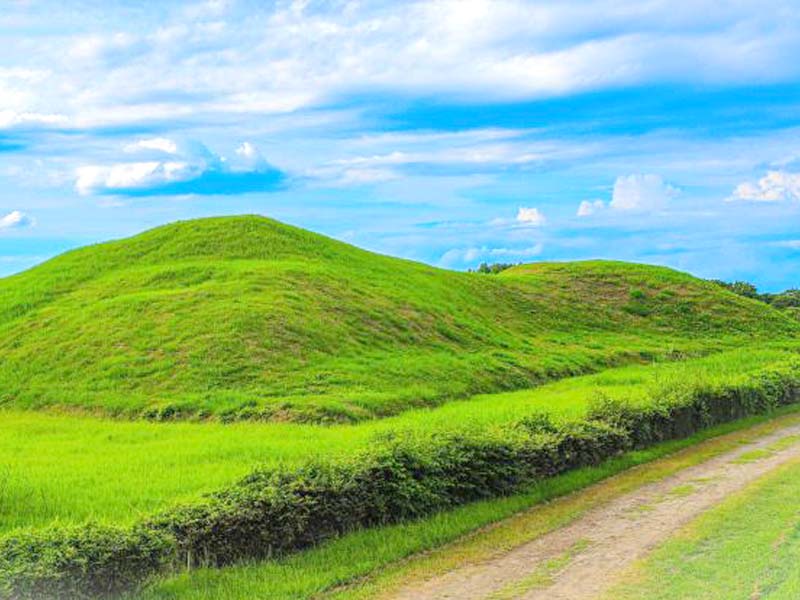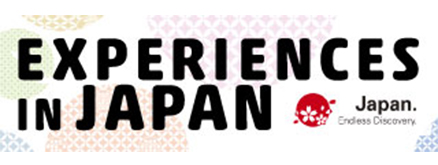The historic castle town is embellished with new flower art! A journey through Gyoda, touching upon the local culture, nature, and art.

— Would you like to experience Hanachozu? —
Gyoda City can be reached in just about 1 hour from the heart of Tokyo. From Tokyo Station or Ueno Station, take a 30-minute Shinkansen ride to Kumagaya Station. Then transfer to the Chichibu Railway, and in approximately 10 minutes, you’ll reach Gyoda-shi Station, situated at the heart of the city.
In the surrounding area, there are spots that stimulate all your five senses, such as shrines with approximately a thousand years of history, castle ruins considered one of the Kanto region’s seven famous castles, and if you go a little further you can see scenic spots like rice paddy art and approximately 120,000 lotus flowers in bloom.
You can explore Gyoda’s culture on foot or opt for tourist bicycle rental services (sightseeing rental bicycles) and a circulating bus, enjoying it in your preferred style of exploration.
Let’s take a short trip and venture into a journey where you can discover new things while immersing yourself in history and culture!
◆Explore the Castle Town Adorned with Japanese flower art Hanachozu
In Gyoda, a town that proudly preserves its ancient history, there are various spots where one can immerse themselves in the traditional culture.
Firstly, a visit to Gyoda Hachiman Shrine, located about an 8-minute walk from Gyoda-shi Station, which is known as the birthplace of Gyoda’s ‘flower temizuya’ (Hanachozu). Along Hachiman-dori street nearby, you’ll find a mix of eateries, shops, and traditional buildings that evoke a sense of charm.
Gyoda Hachiman Shrine is known as the ‘Shrine of Prevention’ and has a tradition of secretly praying for prevention, including an incantation to stop a child’s night crying, serious illnesses and bad habits. Within the shrine precincts, various deities are enshrined, including the ‘Shrine of the eyes,’ a deity for eczema and beautiful skin (Shishun/ Bihada no kami), and the Seven Lucky Gods of Oshi Castle.
Here, you can appreciate the Hanachozu, where hand and mouth purification basins, called “temizuya,” are adorned with flowers. Each flower expresses its own unique world, creating incredibly beautiful artwork.
This Hanachozu initiative began at the Gyoda Hachiman Shrine in 2020. Due to the impact of the COVID-19 pandemic, the initiative expanded across various places in Gyoda City with the aim of providing healing and solace to visitors. Currently, as part of ‘Gyoda Hana chozu Week,’ regular light-up events and other activities take place where Hanachozu is exhibited in ceramic pots and flowers adorn the eaves of shops and private homes.
This gentle culture of spreading healing and comfort among people seems to have taken root in Gyoda.
Moreover, at the Gyoda Hachiman Shrine, there is another notable power spot known as the “Nade Momo (stroking peach),” renowned for its protective powers against illnesses and disasters. They also offer various types of omikuji (fortune telling paper) and amulets, so feel free to explore and choose according to your preferences.
For more information about “Gyoda Hachiman Shrine,” click here.
https://en.chocotabi-saitama.com/spot/20863
◆Let’s try creating your original Hanachozu
The next place we visited was the Oshi Castle ruins, located about a 15-minute walk from Gyoda Hachiman Shrine.
Oshi Castle was built around 500 years ago. During the latter half of the 16th century, in the Sengoku period, it was known as an impregnable fortress that withstood attacks from well-known Japanese historical figures such as Uesugi Kenshin and Ishida Mitsunari, popular among history enthusiasts.
You might have visited famous castles in Japan such as Himeji Castle, Osaka Castle, or Kumamoto Castle during your visit. Oshi Castle has been selected as one of “Continued 100 Fine Castles of Japan” due to its exceptional historical value and its representation of the era and region.
Although it was abandoned in 1871 and subsequently demolished, the three-story turret was reconstructed in its current location in 1988 and now serves as part of the Gyoda City Folk Museum.
Visitors can create their own original Hanachozu at Oshi Castle Ruins by making a reservation in advance, and enjoy taking commemorative photos with the castle in the background.
Create your own Hanachozu by selecting your preferred flowers from a variety of colorful options based on the season you visit, cutting the stems as you like, and arranging the flowers in a container filled with water. Enjoy the process of making Hanachozu with the intention of offering a sense of healing to those who see it.
Click here for details and reservations for “Hanachozu Making at the Oshi Castle Ruins”
https://saitama-supportdesk.com/experiences/experience-hana-chozu-flowers/
◆At the “Oshi Castle Ruins,” visitors are welcomed by the armored corps (Kacchuutai)
At the Oshi Castle Ruins, Oshijo Omotenashi Kacchutai warmly welcomes you, and introduce the history of the castle through engaging and entertaining dance performances. Their demonstrations while adorned in armor and wielding swords are enjoyable for not only samurai fans but also for everyone. You might find yourself wanting to take a commemorative photo with them!
*If you wish to meet Oshijo Omotenashi Kacchutai, please check the deployment(performance) schedule before your visit.
At the site where the main keep of Oshi Castle once stood, you’ll find the Gyoda City Folk Museum. This museum showcases numerous authentic materials, allowing visitors to delve into the history and culture of Gyoda from ancient times to the present day.
If you have an interest in traditional Japanese culture and local history, this is a must-visit. Nearby, there’s the Castle Site Park where you can capture splendid photos of cherry blossoms alongside the castle, serving as a relaxing spot for the locals.
For more details on the “Oshi Castle Ruins and Gyoda City Folk Museum,” please click here.
https://en.chocotabi-saitama.com/spot/20866
Click here for details on “Oshijo Omotenashi Kacchutai Deployment Schedule ”
https://www.gyoda-kankoukyoukai.jp/omotenashi.html
◆Gyoda, the city of Japan’s best tabi socks
When strolling through the streets of Gyoda, you’ll come across various warehouses such as earthen storehouses and stone storehouses. In fact, these are warehouses have historically been used for tabi manufacturing, a craft that has thrived in Gyoda since ancient times.
Some people might not be familiar with the term “tabi,” but these are the socks used as footwear when wearing a kimono.
The history of tabi socks in Gyoda dates back approximately 300 years. Initially, tabi-making was a side job for samurai wives. Gradually, it gained recognition as a renowned local product of Gyoda. At its peak, Gyoda produced about 80% of tabi socks nationwide. Over time, tabi storehouses (tabigura) were constructed to store finished products and raw materials, integrating architectural styles from various eras. Even today, Gyoda remains the top producer of tabi socks in Japan, supporting traditional Japanese attire culture from the ground up.
At the “Tabi Making Experience Center” that we visited this time, you can try your hand at making tabi socks and take commemorative photos wearing kimono paired with tabi socks. While tabi socks commonly come in plain white or black, this center offers a brand called “SAMURAITABI,” presenting a variety of new designs and patterns using expert craftsmanship. It’s recommended for those who wish to explore tabi culture.
For details about the “Tabi Making Experience Center,” click here.
https://uni-samurai.myshopify.com/pages/tabi-experience
◆The magnificent “rice paddy art” is a must-see!
The rice paddy art known as a symbol of Gyoda from early summer to autumn decorates the fields by using multiple varieties of rice to create images and text, portraying the rice paddies as a canvas. Gyoda’s rice paddy art, once recognized in the Guinness World Records, is at its best from mid-July to mid-October each year.
This art, created with a different theme annually, is viewable from the observation deck at the nearby Ancient Lotus Hall. It’s a living art piece worth seeing when you visit Japan. From the panoramic observation deck, you can gaze not only over Gyoda City but also across the Kanto Plain and the surrounding mountains.
On the opposite side of the rice paddy art, you can overlook the Kodaihasu no Sato (Ancient Lotus Village) below. Designated as a natural monument of Gyoda City, these ancient lotuses are said to retain primitive forms and consist of approximately 42 species and around 120,000 lotus plants. The lotus flowers bloom early in the morning from mid-June to early August, offering a splendid view. Be sure to stop by once you get off the observation deck.
Access to the Ancient Lotus Hall is convenient via rental cycles or the circulating bus. Inside the hall, visitors can enjoy a hands-on experience with dioramas and films on a large screen.
*The rice paddy art in the photo is from the 2021 design.
For more details about ”Kodaihasu no Sato”, click here
https://en.chocotabi-saitama.com/spot/20865
◆Capture your travel memories with Gyoda’s specialty product souvenirs
Our final destination was ”Tourist Information Center Buratto Gyoda.”
Here, various local specialties and products are available for purchase, making it an ideal place to find souvenirs to commemorate your visit to Gyoda. Additionally, they offer a bicycle rental service (Tourist Rental Cycle), which is convenient for those planning to explore Gyoda by bike.
For more details about ”Tourist Information Center Buratto Gyoda,” click here
https://en.chocotabi-saitama.com/spot/20862
How do you like it?
In Gyoda, you’ll definitely get to explore Japan’s history and culture in a way you haven’t before, and experience something entirely new.
Don’t miss out on souvenirs like Gyoda’s renowned ‘Juman-goku Manju,’ along with plenty of traditional and charming sweets. Why not extend your journey a little from Tokyo and enjoy a trip that’s unique to this area?


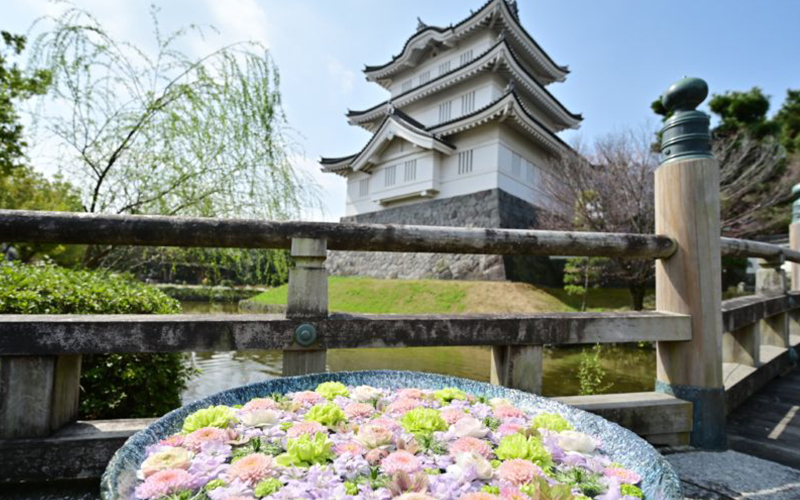
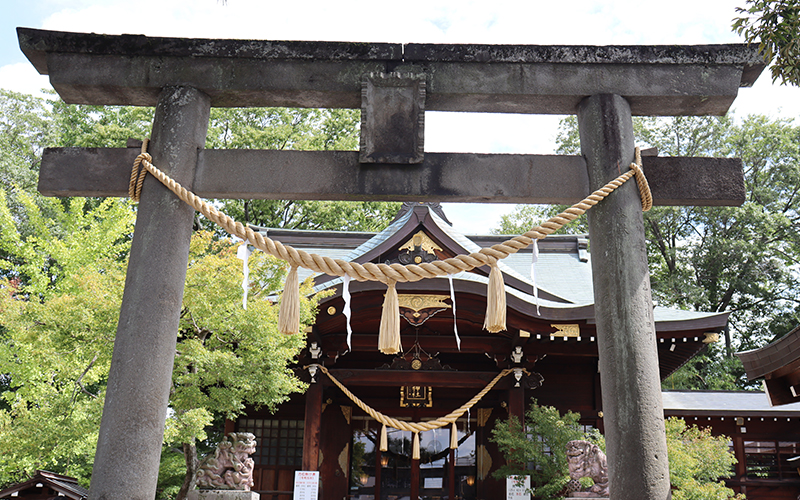



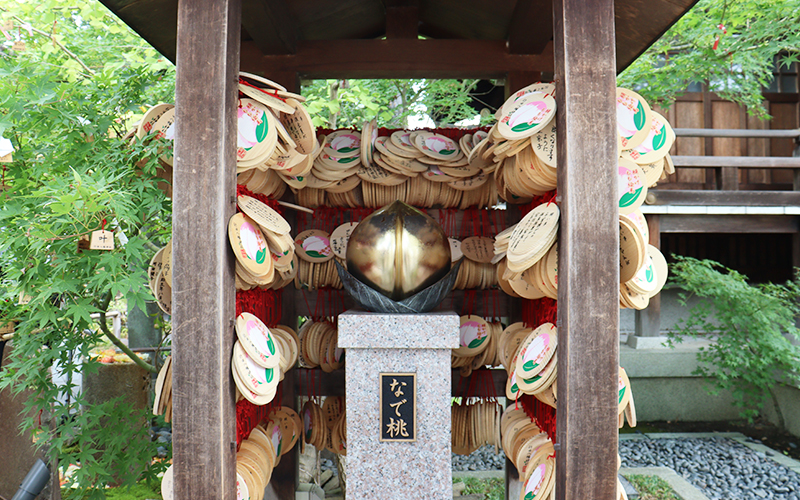
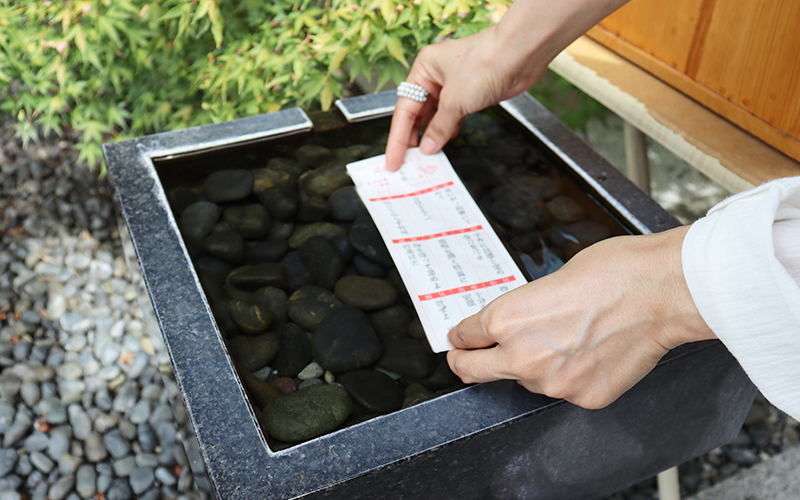

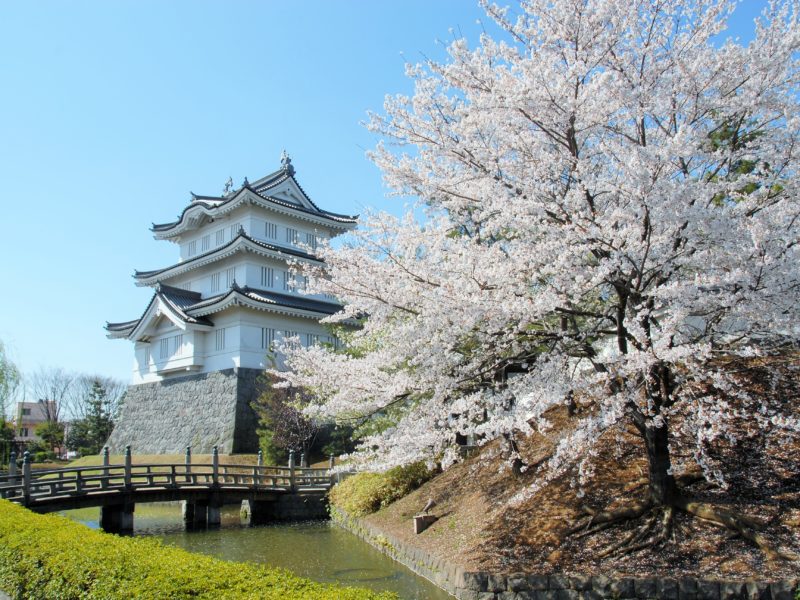



.jpg)
